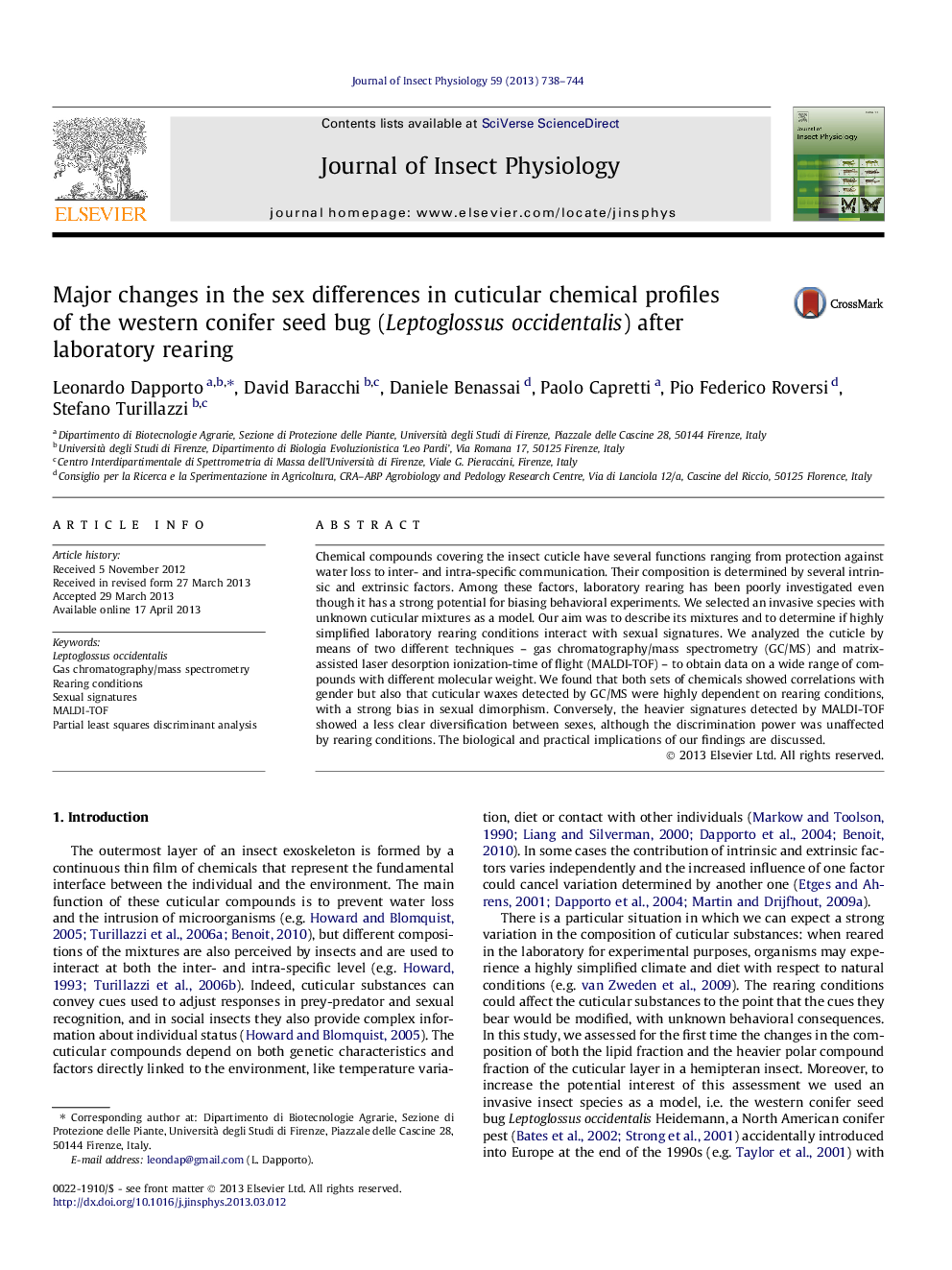| کد مقاله | کد نشریه | سال انتشار | مقاله انگلیسی | نسخه تمام متن |
|---|---|---|---|---|
| 2840593 | 1165339 | 2013 | 7 صفحه PDF | دانلود رایگان |

• We describe the cuticular mixtures of Leptoglossus occidentalis.
• GC/MS and MALDI-TOF were used to detect a wide range of compounds.
• Males and females showed differences in both series of chemicals.
• Laboratory rearing tended to diminish the sex differences in cuticular lipids.
• We discuss implications for laboratory rearing of invasive species.
Chemical compounds covering the insect cuticle have several functions ranging from protection against water loss to inter- and intra-specific communication. Their composition is determined by several intrinsic and extrinsic factors. Among these factors, laboratory rearing has been poorly investigated even though it has a strong potential for biasing behavioral experiments. We selected an invasive species with unknown cuticular mixtures as a model. Our aim was to describe its mixtures and to determine if highly simplified laboratory rearing conditions interact with sexual signatures. We analyzed the cuticle by means of two different techniques – gas chromatography/mass spectrometry (GC/MS) and matrix-assisted laser desorption ionization-time of flight (MALDI-TOF) – to obtain data on a wide range of compounds with different molecular weight. We found that both sets of chemicals showed correlations with gender but also that cuticular waxes detected by GC/MS were highly dependent on rearing conditions, with a strong bias in sexual dimorphism. Conversely, the heavier signatures detected by MALDI-TOF showed a less clear diversification between sexes, although the discrimination power was unaffected by rearing conditions. The biological and practical implications of our findings are discussed.
Figure optionsDownload as PowerPoint slide
Journal: Journal of Insect Physiology - Volume 59, Issue 7, July 2013, Pages 738–744